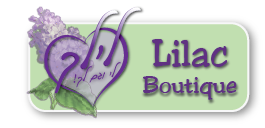Communication is like a game of ping-pong. If you don’t volley back the ball, you can’t continue playing and the game is over. Similarly, the way an adult responds to a child’s verbal communication will have a significant impact on the child’s language development.
In order to develop and enrich a child’s language, and subsequently his reasoning skills, it’s important to first determine his current level of communication. This level can be evaluated by paying attention to the child’s sentence structure – simple, joined, or complex as well as to the vocabulary he uses – the nouns, verbs, adjectives and spatial and time-related words. Body movement and gestures are also a mode of communication and should be taken note of as well. Just like in the ping-pong game, when one player doesn’t throw back the ball, the game ends, so too, an adult’s failure to respond will halt the communicative interaction.
After evaluating a child’s language and communication level, we can work on improving and expanding his language skills, while keeping in mind several factors:
- Developing language skills does not just mean equipping the child with the ability to answer questions, but rather encouraging spontaneous and extensive communication. In effective communication, a topic is elaborated on in a series of related sentences.
- When a child wants something, we should wait for him to verbalize his wants. It’s not wise to give into his demands right away (before he verbalizes it) even if we know exactly what it is that he wants.
- Every attempt by a child to communicate should be responded to, even if it is on a below-than-expected level. It’s important to acknowledge and encourage every communicative signal whether it’s eye contact, a request, taking a turn, continuing a topic of discussion, or asking questions.
- In order to raise a child’s language level we need to use “why” questions and other open-ended questions. Using open-ended questions, as opposed to just yes/no questions, is a prime way to promote language enhancement.
- We need to show interest in a child’s initiated communication and it’s important to confirm our comprehension by paraphrasing his words.
- One way to help expand a child’s vocabulary and sentence structure is by elaborating on a topic of discussion by using richer language and descriptions.
- For a child who has difficulty speaking, it is not wise to talk instead of him in order to make things easier for him or just to break the silence. By talking instead of the child, the teacher/parent is taking away the child’s chance to initiate communication and with it, his confidence. If we won’t empower the child with the ability and confidence to initiate communication, he will end up only answering questions. A child who takes the courage to initiate conversation will progress faster than a child who just responds to questions. If the child sees that the adult is patient and ready to hear him out, he will try to initiate and conduct conversations even if he isn’t 100% sure how correct his language usage is. This is how he will enhance his language skills.
- It’s important to remember that in language development, comprehension always precedes expression and it is also more comprehensive, so it’s vital to work on each element separately.
In a classroom setting, a teacher should strive to incorporate vocabulary enrichment in every lesson. At the end of this article, you will find a model for language enrichment that can be applied to any subject matter. By referring to this model while building a lesson plan, teachers can upgrade their lessons from a simple vehicle through which knowledge is conveyed to a springboard for language and thought enhancement. When planning a lesson, a teacher should refer to the below model and see which language skills she can incorporate in the lesson.
Before we get to the model, let’s review a few more important rules regarding lesson construction:
- New subject matter should be supported by knowledge that’s already familiar to the children
- Visual aids and motivational experiences leads to faster absorption of new material
- During the learning process, it’s important to use appropriate language: For new material – simple language should be used (familiar words, short sentences).
For old material – more complex language usage is in place (longer, complex sentences, richer vocabulary).
In summary: By listening actively and patiently, encouraging communication initiative, posing open-ended questions, incorporating stimulatory activities and emphasizing language expansion, we can, b’ezras Hashem, help our students develop and enrich their language skills.
Blueprint for Constructing a Language Lesson Plan
Lesson topic: ____________________
- Ø Vocabulary:
- Nouns
- Categories
- Verbs
- Adjectives
- Opposites
- Spatial concepts
- Ø Sentence Structure: Simple sentence, joined sentence, complex sentence
- Ø Thought process:
- Understanding questions
- Classification
- Comparing and contrasting
- Reasoning
- Expression
- Problem solving
- Inferring conclusions
- Ø Oral memory:
- Following instructions
- Paying attention
- Ø Story: a story that ties in with the topic







